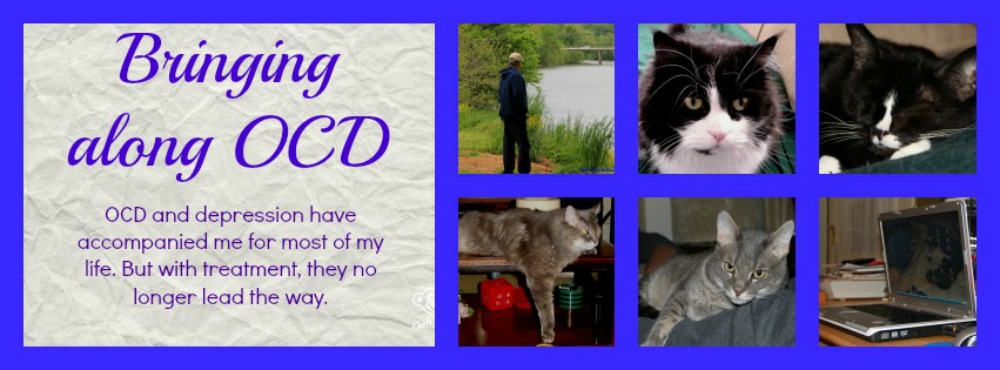 |
| A bit of spring: dogwood blossoms. |
How wily are the ways of obsessive-compulsive disorder.
I had another cognitive behavioral therapy session today, and I left my therapist’s office with a new understanding of how subtle avoidance can be.
I have compulsive rituals that I perform to try to lessen the anxiety caused by obsessive thoughts. I also avoid doing certain things because of the anxiety caused by whatever it is that I’m avoiding.
As I wrote about two weeks ago, my therapist and I decided that I would work on clearing my clutter of papers.
I did one 15-minute session of clearing clutter two weeks ago, and I haven’t done any more work on it since then.
Let’s change course
Today, I decided I would tell my therapist that I wanted to change course. Several things fed into my decision.
· I have been feeling a lot of anxiety lately, even waking up with it.
· I have had no interest in continuing to clear the clutter.
· I have felt overwhelmed by the fact that I’m trying to work on several things at once—my issues with clutter, with writing, with checking, with rituals that slow me down.
It would be better if I just focused on one OCD manifestation, I told him. I would work on checking.
Not so fast
He sat back in his chair and smiled a little.
“OK,” he said. “You want to focus on one thing, the checking. So what happens when you come in here next time and want to work on something else?”
I was taken aback. I wasn’t sure what he meant. Or, rather, I was afraid that I knew what he meant.
What he meant was that he believed I wanted to change course because I didn’t want to face the clutter. I didn’t want to face the anxiety of cleaning it up because it was not going to be easy.
It’s all about the OCD, he said. It was about my scrupulosity, my fear of finding something in the clutter of mail and papers that showed I had missed paying a bill, missed doing something that I was supposed to have done.
I immediately knew he was right. Apparently, I’m pretty good at finding ways to put off OCD issues that I don’t want to face.
Face the anxiety
My therapist said the only way I was going to get over this anxiety was to face it. The 15-minute rule wouldn’t work after all, because though I got anxious during the clutter session two weeks ago, I moved away from the anxiety after 15 minutes.
What I had to do, he said, was to keep on working on the clutter, even with high anxiety, until it started to go down on my 1 to 10 scale.
Focus on what I could control now. I could deal with future problems when they happened, he said.
So, here I go. I have to face the anxiety. I don’t want to. But to get well, I have to.
What about you? Do you practice avoidance? How do you face the anxiety?













